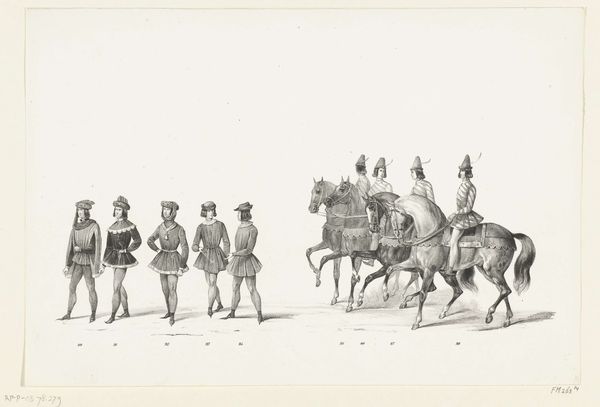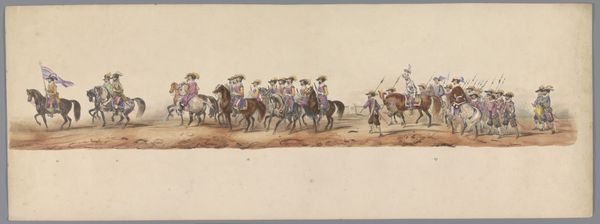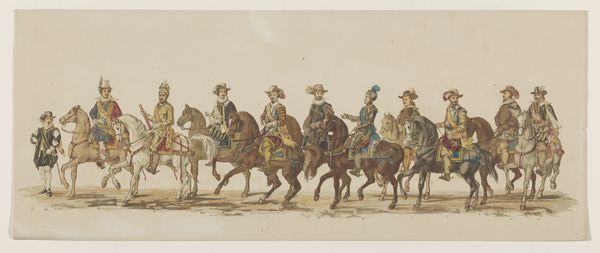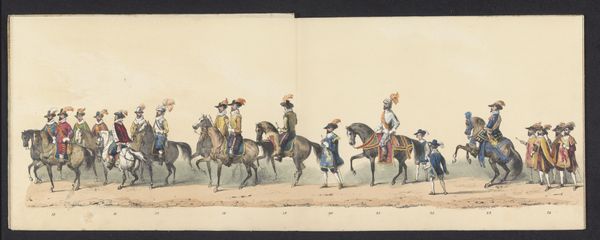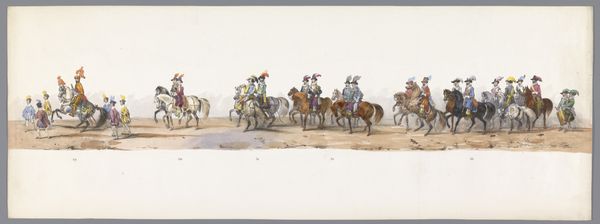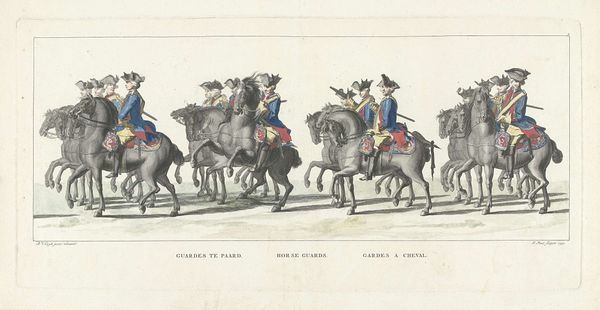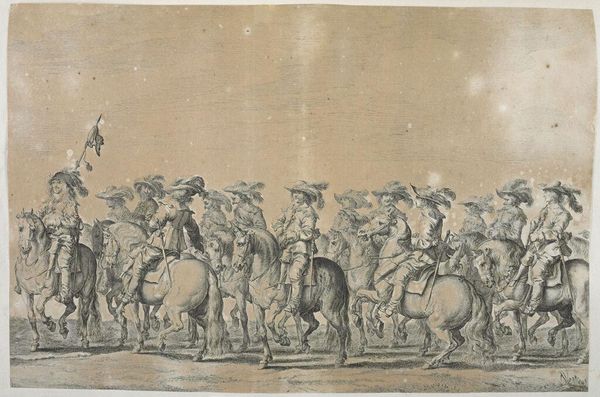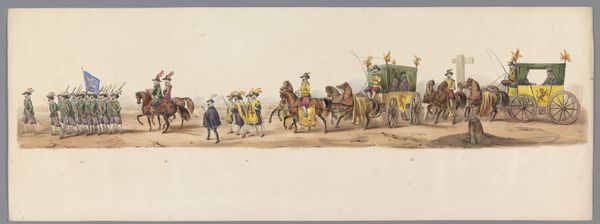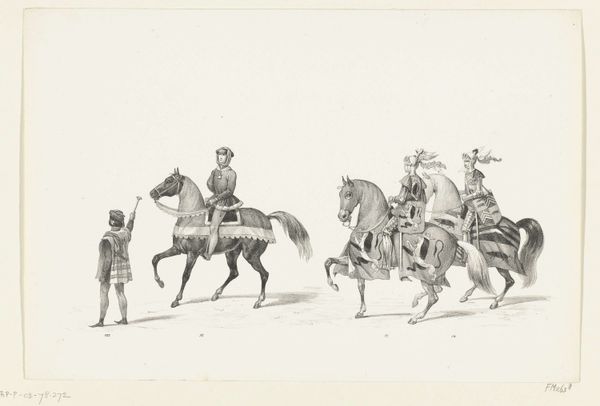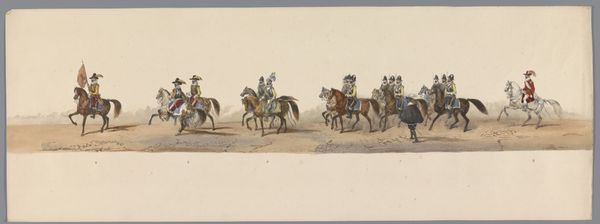
Derde groep in de optocht bij de viering van het 25-jarig regeringsjubileum van koning Willem III te Amsterdam, 1874 1874
0:00
0:00
anonymous
Rijksmuseum
mixed-media, print, watercolor
#
mixed-media
# print
#
landscape
#
watercolor
#
group-portraits
#
line
#
genre-painting
#
history-painting
#
mixed medium
#
mixed media
#
watercolor
#
realism
Dimensions: height 234 mm, width 874 mm
Copyright: Rijks Museum: Open Domain
Curator: Looking at this mixed-media piece titled "Third Group in the Procession During the Celebration of the 25th Anniversary of the Reign of King Willem III in Amsterdam, 1874" I'm struck by the detail rendered despite what seems to be an emphasis on capturing the scale and grandeur of a royal celebration. Editor: Immediately, I feel a sense of ordered pageantry, but there's something almost fragile about it with the watercolor washes. It reads like a carefully constructed display of power. How did Amsterdam's citizens respond to such a formal demonstration? Curator: The artwork provides insight into how royal authority was projected and perceived in the late 19th century. Celebrations like these were meticulously orchestrated to reinforce the monarchy's legitimacy. The placement of riders and marching participants showcases Willem’s effort to be seen as the head of a stable regime after turbulence from his predecessors and the French revolution of 1848. Editor: Indeed, it's interesting how even these representations are carefully curated. Notice the repetition in uniform, a reinforcement of both order and a type of exclusive citizenship—or at least allegiance to the crown. What can this tell us about social stratifications at the time? Curator: Precisely. The celebration visually affirms social hierarchies and the monarch's role as the apex. However, it's also essential to acknowledge the limitations of such a visual record. Anonymous by profile name, the artwork offers an unverified viewpoint from its time period—potentially one designed for widespread, consumable propaganda. Editor: It’s such an explicit performance. Do you get the sense the people really felt united under the crown? How might marginalized communities have received this pomp? Curator: That is definitely a relevant question to be asking when we view this from a 21st century perspective! We have to ask if the event reflected true social integration, or mainly, if at all, served to pacify burgeoning nationalist tensions from other cultures in Amsterdam at this time. Editor: Food for thought for all of us visiting this artwork, really. Curator: Absolutely. Thank you for taking us beneath the pageantry into the complex social and historical undertones present. Editor: Likewise, thanks for sharing your historical perspective and expertise with us today.
Comments
No comments
Be the first to comment and join the conversation on the ultimate creative platform.


